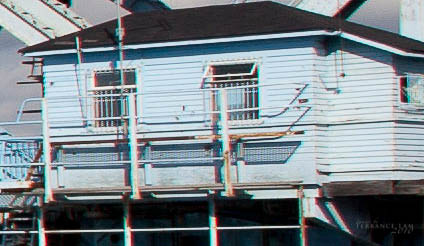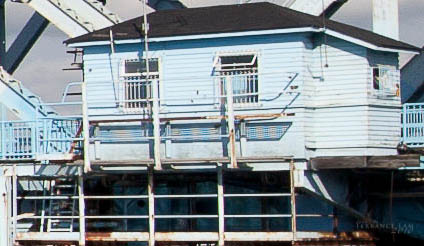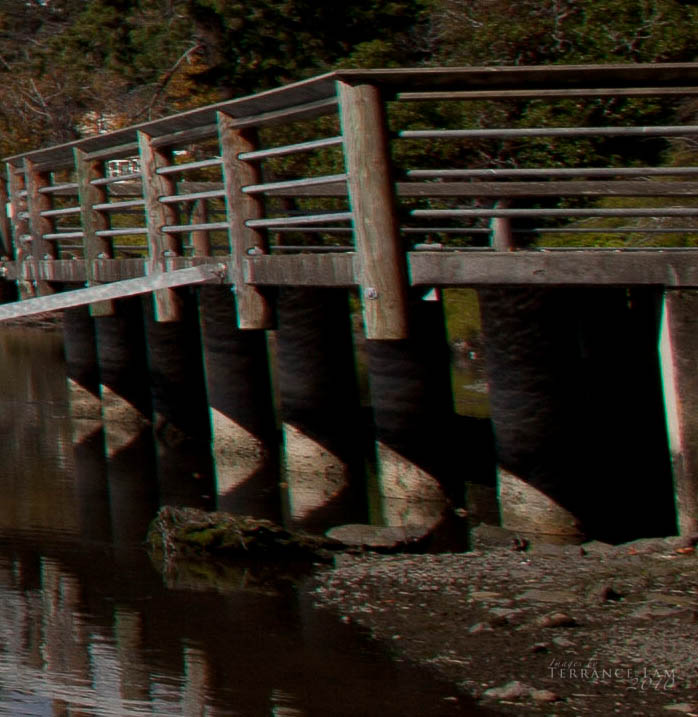Ultra Wide Angle Comparisons. Samyang 14mm vs Canon 16-35L II
This is a republished comparison I did here. I was requested to do a comparison of the Samyang 14mm F/2.8 IF ED MC Aspherical lens to something like the Canon EF 16-36mm f/2.8L USM II on my 5DmkII so I put together a series of shots and compared the images.
So first things off, is it fair to compare a 14mm prime to a 16-35mm zoom. Well yes and no. Both lenses are Ultra-wide angle lenses and both are F/2.8 maximum aperture. One lens costs $400 USD, while the other is somewhere around $1600 USD. One is automatic focus and diaphragm, while the other isn't. So why compare? Beyond pixel peeping the versatility of the 16-35 does show it's value, but just for field of view and edge to edge image quality, there is a compelling reason to go with the much cheaper prime.
Landscape shots are really going to benefit the most with this lens, but interior type shots will also benefit from this range. However, by the very nature of all Ultra Wide Angle lenses, do tend to fall victim to a very unique and hard to correct type of barrel distortion called moustache distortion. Lightroom corrects both lenses very well, but in my long time search for the perfect UWA lens, I even have a Nikon 14-24 to try to get distortion free UWA, but it's sharpness was still something that the 16-35 mark II beat, especially in the center (The 14-24 definitely wins points for edge to edge consistency). Sigma 12-24 is also another zoom to consider. I don't own this lens anymore but certainly, of the zoom type UWA's, it had the least amount of distortion. I regretfully did not keep it when I moved from crop to full frame.
So first the images:

View on Black
Canon 16-35mm

View on Black
Samyang 14mm
Both of these images were shot at F/8 and on a Tripod. This helps demonstrates what the extra 2mm adds to the image. Distortion, generally speaking, is pretty similar across the board. Both displays a degree of moustache distortion which is easily corrected in Lightroom. The Canon is slightly better in that department but not easily spotted.
But here's where the real differences come in. Below is 100% crops of the images which show the apparent weaknesses of the 16-35 II:

View on Black
Canon 16-35mm

View on Black
Samyang 14mm
You'll have to click on the images to see the full sized effects. But on the 16-35, the amount of edge distortion and CA is really apparent. Again this can be corrected in Lightroom, but it cannot correct for the other weaknesses in the lens like sharpness (This is where DxO Optics can make the 16-35 better and unfortunately where there is no current support for Samyang).
Here's another series of images:

View on Black
Canon 16-35II @F/11

View on Black
Samyang 14mm @F/11

View on Black
100% Crop 16-35

View on Black
100% Crop 14mm
The crops show where the zoom really falls weak in comparison to the prime 14mm. The sharpness is lost and the CA is pretty bad, even at F/11.
Conclusions: Well it's not all fair in comparison. One lens is really suited for a specific task (Samyang for landscape), while the other is designed for more versatility. However when it comes to image quality, the Samyang wins over the Canon L, by a significant bit (specifically the edge to edge performance). For landscape photographers who like to shoot ultra wide, the extra 2mm is a great boon for you. Those interior shooters will appreciate the wider field of view and can use software to correct for perspective control, giving you a very inexpensive Tilt-Shift solution.
In comparison to the Nikon 14-24, the Samyang holds up well against it. I didn't have it with me for testing but I certainly don't see a major benefit of the Nikkor over it. Considering this lens is 1/3 the cost of either the Nikkor or the Canon, it's really hard to beat. But keeping this in perspective, when using Lightroom/Photoshop to correct for the weaknesses of the lenses, it becomes harder to see the differences. Although the sharpness is hard to beat on the Samyang, it isn't supported by DxO Optics which is unfortunate. Using that RAW processor, the 16-35 definitely comes out a winner in the versatility department.
So first things off, is it fair to compare a 14mm prime to a 16-35mm zoom. Well yes and no. Both lenses are Ultra-wide angle lenses and both are F/2.8 maximum aperture. One lens costs $400 USD, while the other is somewhere around $1600 USD. One is automatic focus and diaphragm, while the other isn't. So why compare? Beyond pixel peeping the versatility of the 16-35 does show it's value, but just for field of view and edge to edge image quality, there is a compelling reason to go with the much cheaper prime.
Landscape shots are really going to benefit the most with this lens, but interior type shots will also benefit from this range. However, by the very nature of all Ultra Wide Angle lenses, do tend to fall victim to a very unique and hard to correct type of barrel distortion called moustache distortion. Lightroom corrects both lenses very well, but in my long time search for the perfect UWA lens, I even have a Nikon 14-24 to try to get distortion free UWA, but it's sharpness was still something that the 16-35 mark II beat, especially in the center (The 14-24 definitely wins points for edge to edge consistency). Sigma 12-24 is also another zoom to consider. I don't own this lens anymore but certainly, of the zoom type UWA's, it had the least amount of distortion. I regretfully did not keep it when I moved from crop to full frame.
So first the images:

View on Black
Canon 16-35mm

View on Black
Samyang 14mm
Both of these images were shot at F/8 and on a Tripod. This helps demonstrates what the extra 2mm adds to the image. Distortion, generally speaking, is pretty similar across the board. Both displays a degree of moustache distortion which is easily corrected in Lightroom. The Canon is slightly better in that department but not easily spotted.
But here's where the real differences come in. Below is 100% crops of the images which show the apparent weaknesses of the 16-35 II:

View on Black
Canon 16-35mm

View on Black
Samyang 14mm
You'll have to click on the images to see the full sized effects. But on the 16-35, the amount of edge distortion and CA is really apparent. Again this can be corrected in Lightroom, but it cannot correct for the other weaknesses in the lens like sharpness (This is where DxO Optics can make the 16-35 better and unfortunately where there is no current support for Samyang).
Here's another series of images:

View on Black
Canon 16-35II @F/11

View on Black
Samyang 14mm @F/11

View on Black
100% Crop 16-35

View on Black
100% Crop 14mm
The crops show where the zoom really falls weak in comparison to the prime 14mm. The sharpness is lost and the CA is pretty bad, even at F/11.
Conclusions: Well it's not all fair in comparison. One lens is really suited for a specific task (Samyang for landscape), while the other is designed for more versatility. However when it comes to image quality, the Samyang wins over the Canon L, by a significant bit (specifically the edge to edge performance). For landscape photographers who like to shoot ultra wide, the extra 2mm is a great boon for you. Those interior shooters will appreciate the wider field of view and can use software to correct for perspective control, giving you a very inexpensive Tilt-Shift solution.
In comparison to the Nikon 14-24, the Samyang holds up well against it. I didn't have it with me for testing but I certainly don't see a major benefit of the Nikkor over it. Considering this lens is 1/3 the cost of either the Nikkor or the Canon, it's really hard to beat. But keeping this in perspective, when using Lightroom/Photoshop to correct for the weaknesses of the lenses, it becomes harder to see the differences. Although the sharpness is hard to beat on the Samyang, it isn't supported by DxO Optics which is unfortunate. Using that RAW processor, the 16-35 definitely comes out a winner in the versatility department.
Comments
Post a Comment